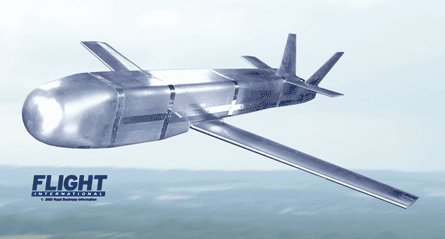Weapons manufacturer packages SMACM for UK strike weapon requirement
Lockheed Martin Missiles and Fire Control has offered its surveilling miniature attack cruise missile (SMACM) for the UK's selected precision effects at range (SPEAR) programme.
The proposed weapon would be equipped with a low-impact warhead being developed by Qinetiq and use targeting databases to be developed by Lockheed Martin UK Insys at its Swift experimentation facility.
The SPEAR project is scheduled to achieve "initial gate" in the first quarter of next year, with "main gate" approval planned for 2010, ahead of initial operational capability by 2013. A related sensor-to-effect study commissioned by the UK Ministry of Defence last year has drawn responses from Lockheed, MBDA, Qinetiq and Raytheon Systems.

The SPEAR requirement currently sits outside the UK's plans to centralise its airborne strike weapons capability around the Team Complex Weapons structure announced at July's Farnborough air show, but is expected to transfer into that arrangement post source selection (Flight International, 25-31 July). The UK wants to retain design sovereignty over the weapon's future use, including the ability to modify its warhead and means of targeting.
Lockheed says it has proposed conducting demonstrations of the SMACM design to the MoD, using two vehicles manufactured under a company-funded development effort and now in storage.
Initially to have undergone demonstration flights in early 2006, development of the missile was set aside to allow Lockheed engineers to concentrate on the company's bid for the US Air Force's Small Diameter Bomb Increment II contest. A Boeing/Lockheed team is competing with Raytheon for the USAF project.
The proposed demonstration for the UK would allow for fast-track exploration of SPEAR concepts, says Lockheed, including testing the new Qinetiq warhead. A lead time of 18 months would be required to support warhead integration and to develop initial targeting algorithms for the UK requirement, it says.
■ The SMACM design's tri-mode seeker has now accumulated 400h of testing and trials, Lockheed says. The company has also been carrying out in-house experiments to explore concepts of operations to use the weapon in a fully networked battlefield environment.
These have included exploring the use of K-series message formats for beyond line-of-sight operations and J-series messages for line-of-sight targeting.
Source: Flight International
















